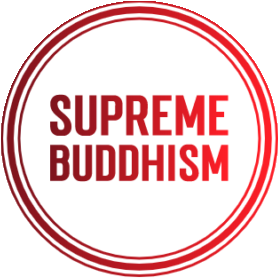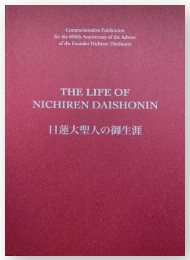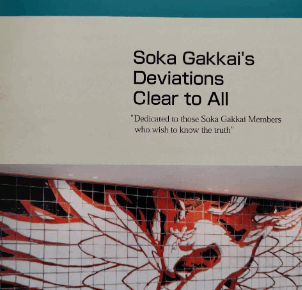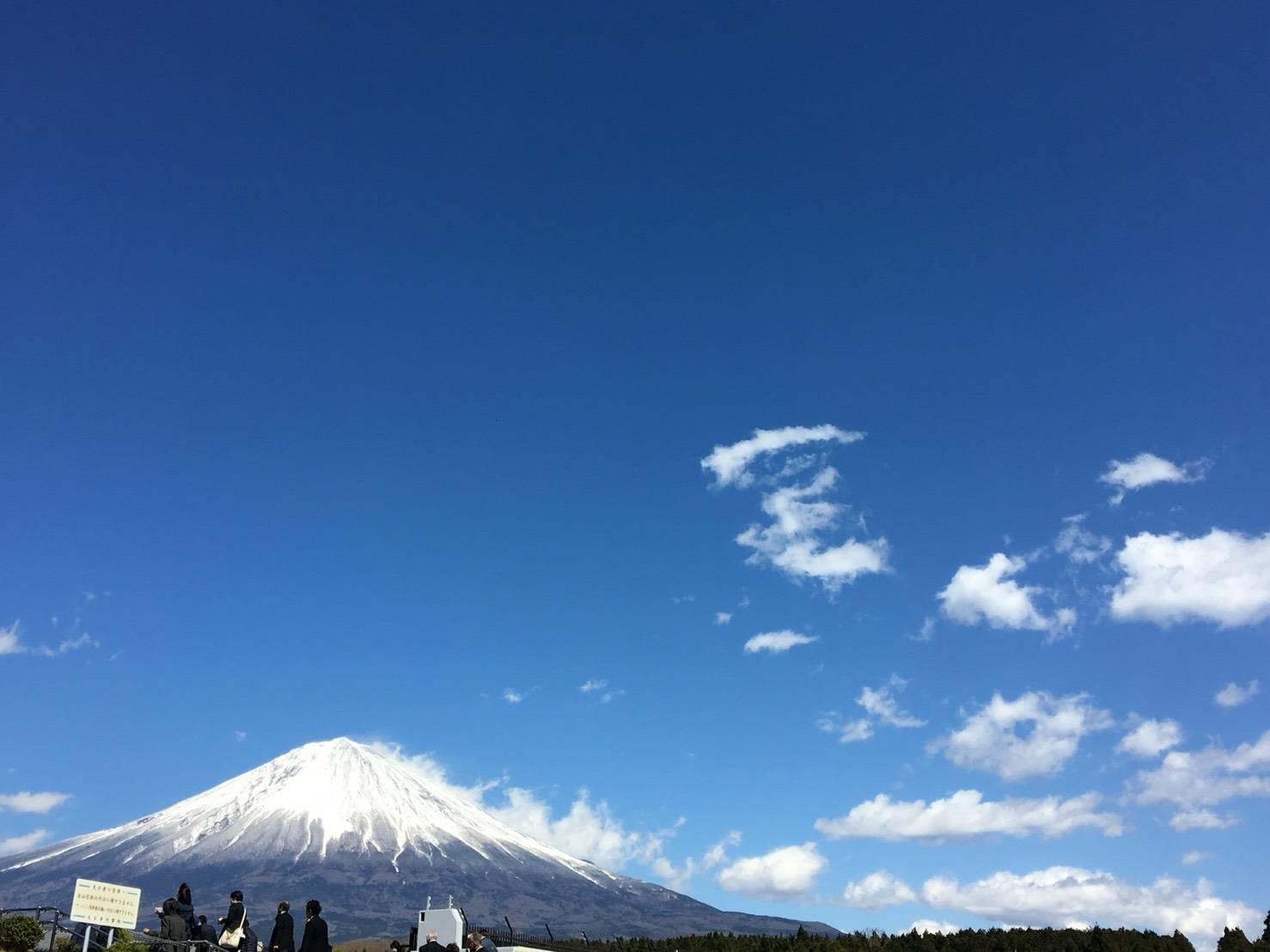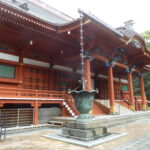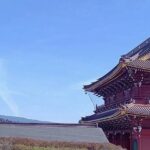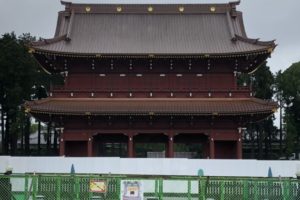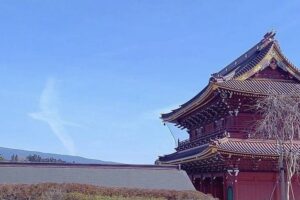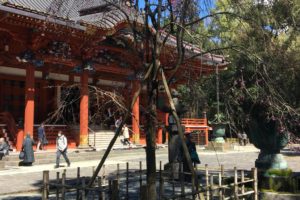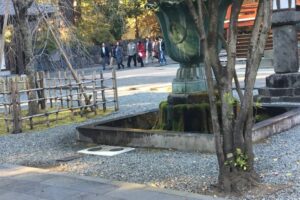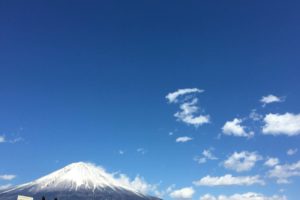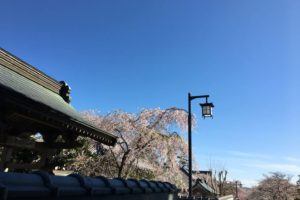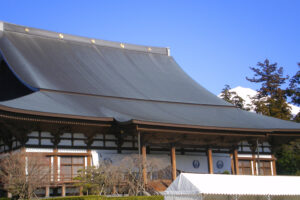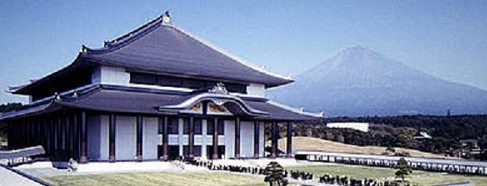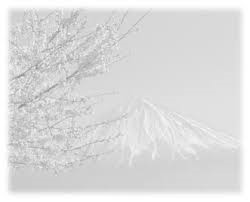Contents
1. The Writing of the Gosho
This Gosho was written on the twenty-first day of the seventh month of the second year of Kenji (1276), when Nichiren 55 Daishonin’s expression of gratitude to his age. It was the first master Dozen-bo. He wrote this Gosho at Minobu and addressed it to Joken-bo and Gijo-bo of Seichoji Temple.
In the Gosho, “Questions and Answers Concerning the Object of Worship” (Honzon mondo-sho), the Daishonin wrote:
At the age of twelve, I entered Seichoji Temple in my province.
(Gosho, p. 1279) .
Nichiren Daishonin entered Seichoji Temple at the age of twelve and studied there. His master at the time was Dozen-bo. Joken-bo and Gijo-bo, who were also disciples of Dozen-bo, were seniors to the Daishonin.
In later years while residing in Minobu, following the Tatsunokuchi persecution and the exile to Sado, the Daishonin learned of the passing of Dozen-bo. He expressed his feelings at the time in the following way:
When I heard the news of his death, I felt as though, whether I had to walk through fire or wade through water, I must rush to his grave, pound on it and recite a volume of the Lotus Sutra for his sake.
(Gosho, p. 1031; MW-4, p. 258)
Nichiren Daishonin, therefore, wrote this Gosho to repay his debts of gratitude to his childhood teacher. He sent a disciple in his stead and gave the following instructions to the priests whom he addressed:
I ask that you have the work read aloud two or three times at the summit of Kasagamori, with this priest [representing me) to do the reading. Please have him read it once before the grave of the late Dozen-bo as well. (Gosho, p. 1038; MW-4, p. 275)
2.The Significance of this Gosho
Through this Gosho, the Daishonin explained the importance of repaying the four debts of gratitude: gratitude to one’ s parents, one’s teachers, one’s sovereign, and the Three Treasures. He focused on the “debt of gratitude to the teacher” and revealed the significance of honoring and upholding his childhood master, Dozen-bo.
Nichikan Shonin, the Twenty-sixth High Priest of the Head Temple, wrote an exegesis on “Repaying Debts of Gratitude.” He divided this Gosho into three major parts.
He stated that, in the first part, the Daishonin revealed the significance of repaying our debts of gratitude. In part two, the Daishonin explained that Nam-Myoho-Renge-Kyo is, indeed, the essence of repaying debts of gratitude. In part three, the Daishonin concluded with words honoring his childhood master. (Ref: Ho’on-sho mondan, Part 1, Reki zen, 6-5).
3. The Importance of Expressing Our Debts of Gratitude and Achieving Benefits
In the opening paragraph of the Gosho, “Repaying Debts of Gratitude” (Ho’on-sho), the Daishonin states:
The old fox never forgets the hillock where he was born; the white turtle repaid the kindness he had received from Mao Pao. If even lowly creatures know enough to do this, then how much more should human beings. (Gosho, p. 999; MW-4, p. 171)
The Daishonin explains that repaying our debts of gratitude is a matter of course in our lives as humans. Then, he continued:
What can we say, then, of persons who are devoting themselves to Buddhism? Surely they should not forget the debts of gratitude they owe to their parents, their teachers, and their country. (Gosho, p. 999; MW-4, pp. 171-172)
The Daishonin teaches that, as the disciples of the Buddha, we must all the more sincerely repay the four debts of gratitude that we owe people. Furthermore, he expressed the true significance of repaying debts of gratitude in Buddhism.
4. The Process of Repaying Debts of Gratitude
Next, the Gosho reveals how to repay the four debts of gratitude: we must study and uphold True Buddhism without fail; we must become knowledgeable and wise; and we must study the entirety of the lifetime teachings of the Buddha.
In the Gosho, “The Opening of the Eyes” (Kaimoku-sho), the Daishonin wrote:
When a man leaves his parents and home and becomes a monk, he should always have as his goal the salvation of his father and mother.
(Gosho, p. 530; MW-2, p. 89)
One who enters the priesthood upholds the objective to study Buddhism and seek the true Way. He has the fundamental determination to save his father and mother, without fail, by upholding the True Law. Accordingly, the Daishonin explained that the true repayment of the debts of gratitude is to save not only their parents but also all humanity by seeking out True Buddhism and by using the essential process set forth therein.
Nichiren Daishonin entered the priesthood, seeking to repay his debt of gratitude and to gain the benefits of such action. The various sects of Buddhism at the time asserted their superiority over others. They all had lost sight of the true will of the Buddha.
The Daishonin did not rely on the words of the master teachers and scholars. He evaluated the entirety of the lifetime teachings of the Buddha based on the information revealed in the sutras. He compared Mahayana and Hinayana Buddhism; the provisional and true teachings; the Essential and Theoretical Teachings of the Lotus Sutra; and the Buddhism of the Sowing of the Great Cause and the Buddhism of the Harvest. The relationship of superiority and inferiority was clear through this comparison. The Daishonin realized that each of the Buddhist sects that extended its power throughout Japan was opposing the will of the Buddha.
He was confident that denouncing the slanders of these religious sects was consistent with the true repayment of the four debts of gratitude. Thus, the Daishonin thoroughly denounced all slander and revealed the essential way of repaying debts of gratitude.
The essential way taught in this Gosho is based on the revelation that Nichiren Daishonin is none other than the True Buddha of the Latter Day of the Law, and that the Three Great Secret Laws of the Essential Teaching (Honmon) that the Daishonin established for the salvation of all humanity is the ultimate foundation.
5. The Revelation of the Three Great Secret Laws
In the Cover Letter to Joken-bo and Gijo-bo that the Daishonin sent with this Gosho, he wrote:
In the enclosed treatise I have written matters of the utmost gravity. (Gosho, p. 1038; MW-4, p. 275)
Nichikan Shonin, the Twenty-sixth High Priest of the Head Temple, explained the significance of the phrase, “matters of the utmost gravity,” in the following way:
The correct revelation of the Three Great Secret Laws of the Essential Teaching (Honmon) is a matter of utmost gravity. (Ho’on-sho mondan, Part 1, Reki-zen 6-5)
In other words, the “matter of utmost gravity” signifies the Three Great Secret Laws, hidden in the depths of the Juryo chapter of the Essential Teaching, which had never before been propagated in the two-thousand years of the Former and Middle Days of the Law, even by the likes of T’ien-t’ai and Dengyo. This point is revealed in the conclusion of the Gosho.
First, the Object of Worship of True Buddhism (Honmon no honzon) was presented by describing the form of the great mandala in terms of the Law. The Daishonin wrote:
In Japan and all the other countries thro out the world, the object of worship should in all cases be the Lord Shakyamuni of True Buddhism. (Gosho, p. 1036; MW-4, p. 271)
He continued:
Shakyamuni Buddha and Taho Buddha who appear in the Treasure Tower as well as all other Buddhas, along with the four bodhisattvas including Jogyo, shall act as attendants to this Buddha.
(Gosho, p. 1036; MW-4, p. 271)
Here, the Daishonin explains that the great mandala Gohonzon that he, himself, inscribed is the fundamental Gohonzon of the Latter Day of the Law that all people must believe in and embrace. He further explains that it represents True Buddhism, which will enable all humanity to attain enlightenment.
Secondly, the Daishonin mentions the High Sanctuary of True Buddhism (Honmon no kaidan). In this Gosho, he did not go into great detail. However, in another Gosho, “On the Three Great Secret Laws” (Sandai hiho bonjoji), the Daishonin gave the following instructions concerning the High Sanctuary of True Buddhism:
Seek out a place of the finest scenery comparable to the pure land of Eagle Peak and there erect the High Sanctuary. Simply wait for the proper time to come. This shall be the actual High Sanctuary of True Buddhism. Not only shall this be the High Sanctuary where the peoples of the three nations and the whole world repent and eradicate their sins, it shall also be the High Sanctuary where Bonten, Taishaku, and the other heavenly of thr descend from the heavens to visit. (Gosho, p. 1595; Doctrines and Practice, p. 207)
Thirdly, the Daishonin presented the invocation or Daimokuof Trure Buddhism (Honmon no Daimoku ) He wrote;
In Japan, China, India and all the other countries of the of , every person, regardless of whether he is wise or foolish, shall set aside other practices and join in the chanting of Nam-Myoho-Renge-Kyo. Gosho, p. 1036; MW-4, p. 271)
Thus, the Daishonin expounded the significance of eliminating slander and chanting Daimoku, the essence of the Lotus Sutra. In this way, the Daishonin revealed the Three Great Secret Laws of the Essential Teaching (Honmon), which form the basis of repaying debts of gratitude.
Furthermore, Nichiren Daishonin declared that, due to his tremendous compassion, the Three Great Secret Laws will bring salvation to all people for the next ten thousand years, and eternally into the future. He wrote:
If Nichiren’s compassion is truly great and encompassing, Nam-Myoho-Renge-Kyo will spread for ten thousand years and more, for all eternity.
(Gosho, p. 1036; MW-4, p. 272)
The Daishonin repaid his debts of gratitude to his teacher by establishing and propagating the True Buddhism of the Three Great Secret Laws, which will enable all people to attain enlightenment and will bring peace to society. The Daishonin taught that this was the supreme way to repay his debts of gratitude not only to his teacher but also to his parents, sovereign, and the Three Treasures.
6. Shakubuku is the Essential Way to Repay One’s Debts of Gratitude
The Daishonin wrote:
If, in this present existence, I am so fearful for my life that I fail to speak out, then in what future existence will I ever attain Buddhahood? Or in what future existence will I ever be able to bring salvation to my parents and my teacher? With thoughts such as these uppermost in my mind, I decided that I must begin to speak out. And, just as I had expected, I was ousted, I was vilified, I was attacked, and I suffered wounds.
(Gosho, p. 1029; MW-4, p. 253-254)
Here, the Daishonin states that he did not begrudge his life in his efforts to propagate the Lotus Sutra, because he sincerely sought to repay his debts of gratitude to his parents, his teacher, the Three Treasures, and his country. He teaches that the benefits of his practice will be directly transmitted, without fail, to his parents and to the spirit of the deceased Dozen-bo. These benefits will further enable those who share a karmic bond to attain enlightenment. Thus, the Daishonin concludes this Gosho by teaching the true, supreme way of repaying debts of gratitude.
The essential way of repaying our debts of gratitude consists of believing in and propagating the Three Great Secret Laws. On the surface, this Gosho describes the Daishonin’s repayment of his debts of gratitude to his teacher Dozen-bo. However, this writing essentially reveals the fact that Nichiren Daishonin, as the True Buddha of the Latter Day of the Law, established and propagated the Three Great Secret Laws.
As his true disciples and followers, we must sincerely believe in Nichiren Daishonin, the True Buddha of the Latter Day of the Law, and take to heart his great compassion. He declared that he would bring salvation to all humanity for the next ten thousand years, and eternally into the future, by effecting the worldwide propagation of the True Buddhism of the Three Great Secret Laws of the Essential Teaching. We must exert our utmost efforts in shakubuku, so that we can provide even the slightest assistance in this great endeavor. Let’s firmly believe that doing shakubuku is the supreme way to repay our debts gratitude to all people. Moreover, let us all advance with great determination in both practice for ourselves and for others, for the sake of achieving kosen-rufu.
